April 14, 2019
The oven was turned on for the last time for the Master’s Program on April 9th. As this blog is being posted, I am flying home from Italy. The program officially ended on April 10th with a final dinner held in Catanzaro Lido. There were about 36 of us counting students, family and friends, kitchen staff and faculty.
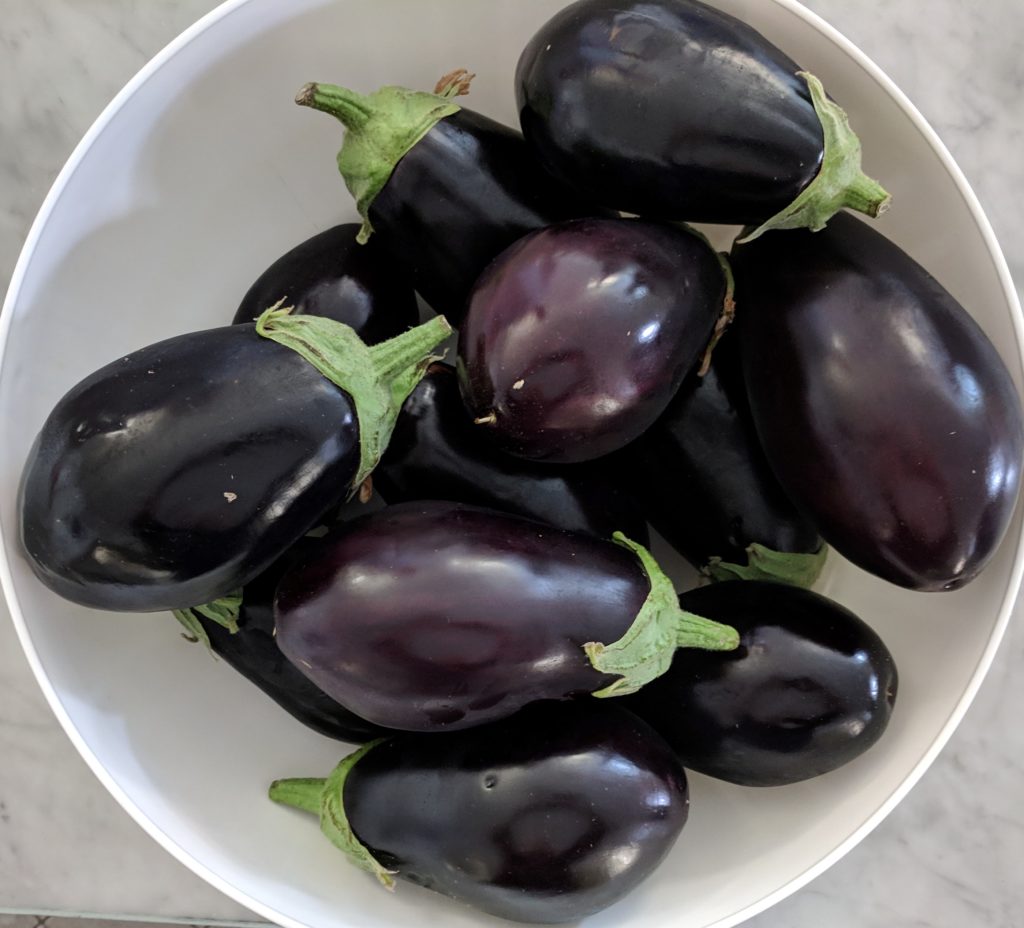
Tuesday, April 9th was our final menu execution. We put on a dinner for about 30 guests. On Sunday, the 7th we submitted our suggestions to Chef and he decided what we would make for the dinner. Mostly we got to make what we requested. We averaged about three dishes per student.
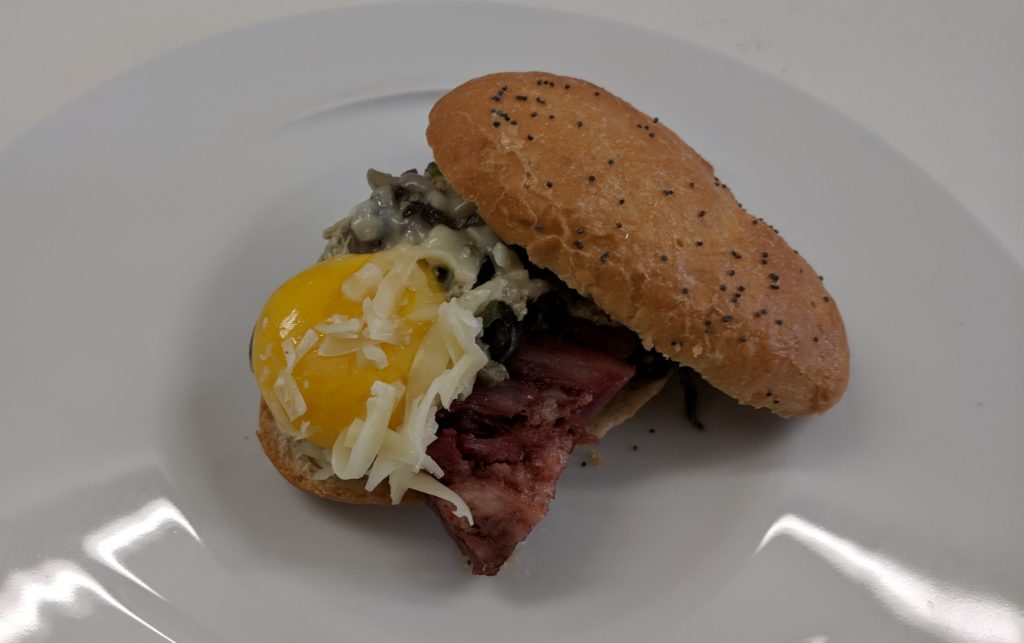
The dinner started with a cold antipasto buffet followed by primi (pasta and risotto dishes) that were plated in the kitchen and served to the guests. We had two waiters to assist us. There were a number of secondi (second plates…usually meat or fish) including Gerard’s insane Truffle Porchetta. Slathered with pureed truffles before it was rolled and slowly roasted, Gerard figured the value of the Porchetta was more than his entire net worth!
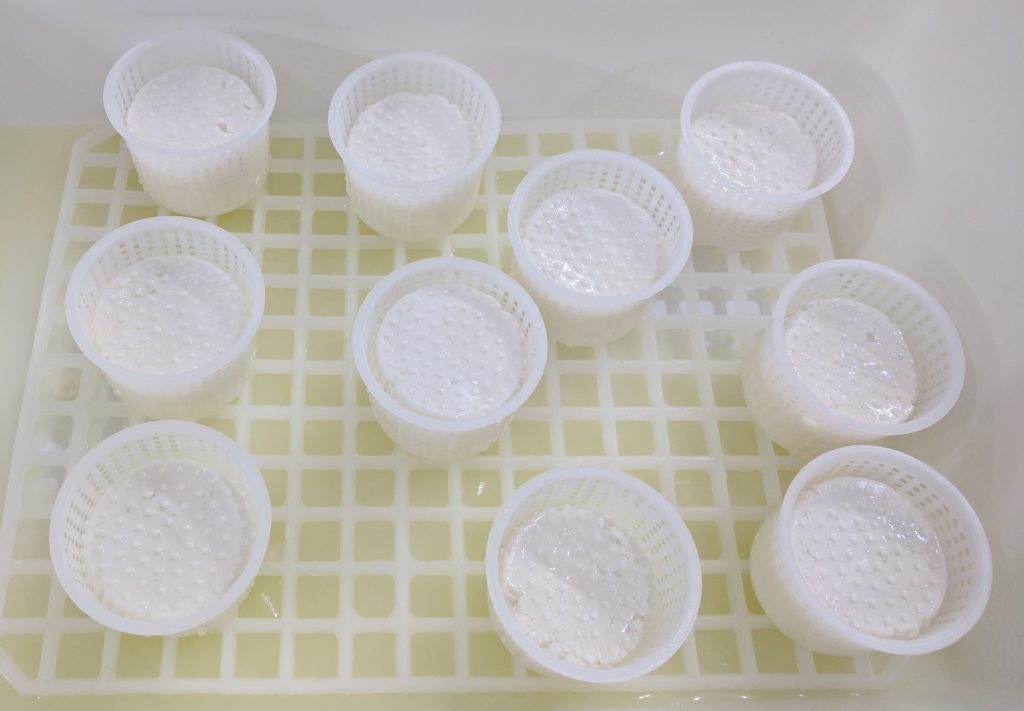
I made three cheeses for the antipasto buffet as well as Lasagna Bolognese made in individual ramekins. The cheeses I made were all Tomini, but flavored differently. My request to also make Pecorino was not approved. Probably because there wasn’t time to age it sufficiently.
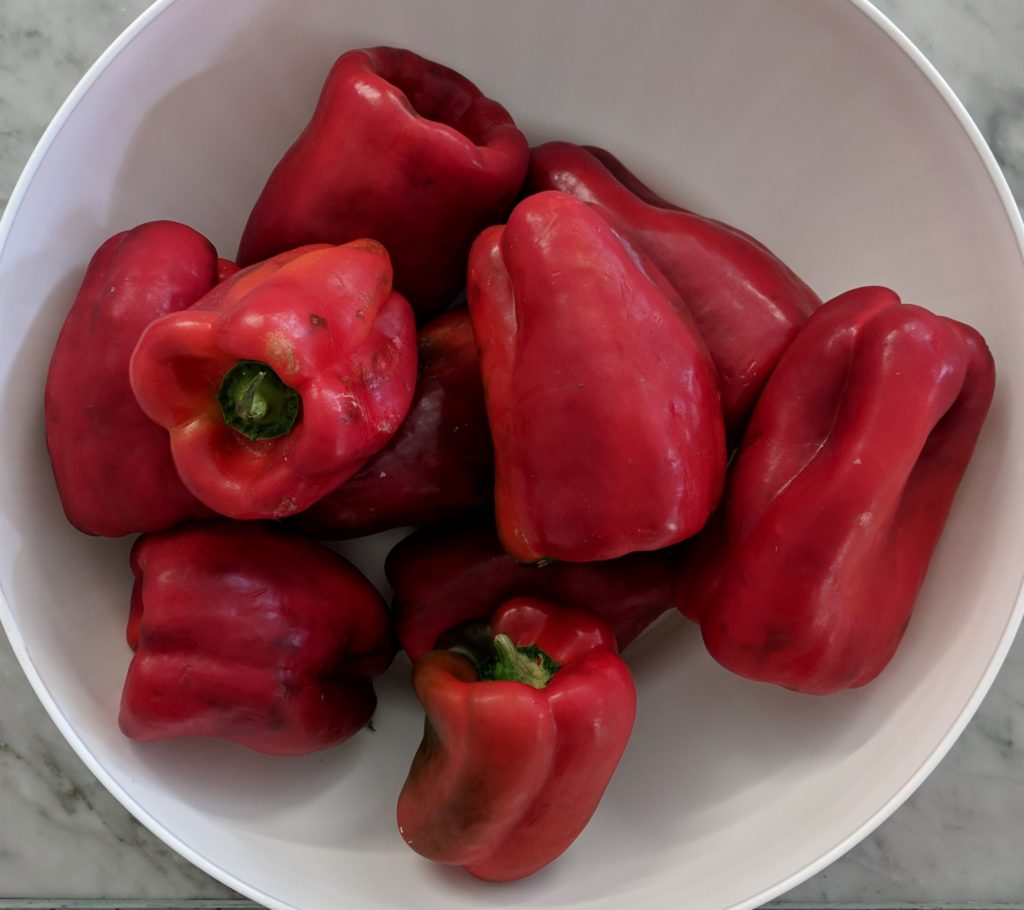
The Tomini were made from raw cow’s milk though in the future I would definitely pasteurize the milk. There are few cheeses that really benefit from being made of raw milk otherwise the risk just isn’t worth it. Tomini can be made from sheep’s milk as well. Finding sheep’s milk in New Mexico is difficult so my Tomini will likely be made with cow’s milk. I’m also going to try a combination of cow’s and goat’s milk, though, as soon as I can find a source of non-homogenized milk. Homogenized milk is not ideal for cheese-making.
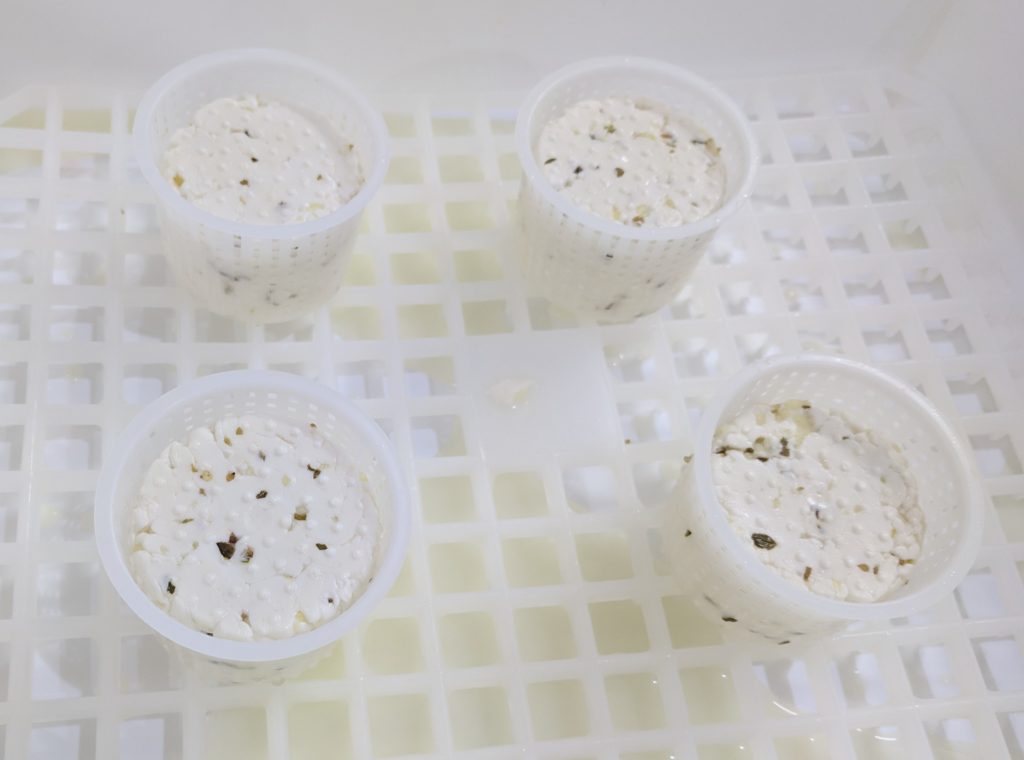
Tomini are usually small cheeses, made in molds that hold 80-100 grams (about 3 ounces) when finished. One style contains a fuzzy (penicillum mold) exterior, like brie and camembert, but most, in my limited experience, do not. I opted for the latter. They can, and often are, aged briefly (just a few days) to create a mellow cheese. Longer aging is possible but given their small size two weeks is about the maximum.
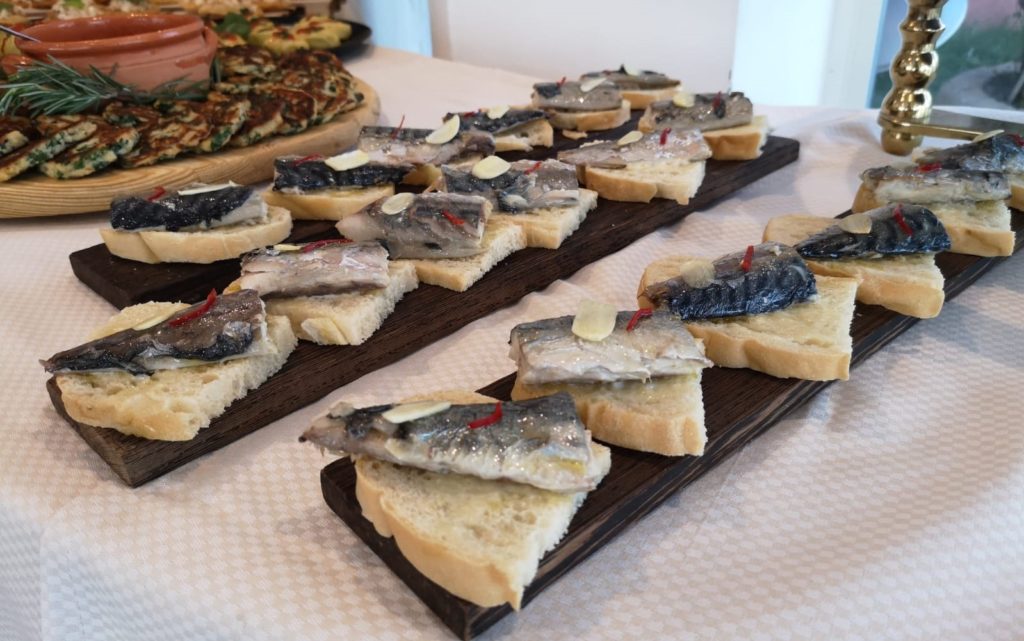
To make Tomini, the milk is heated and inoculated with yogurt to begin to acidify it. Subsequently rennet is added. After the curds are cut, the proto-cheese is heated to firm up the curds before they are put into molds. After draining and salting, they are aged for a few days at 10°C-12°C (50°F-53.6°F), just a little cooler than a wine cellar. I am committed to having Tomini in our Santa Fe wine cellar soon!
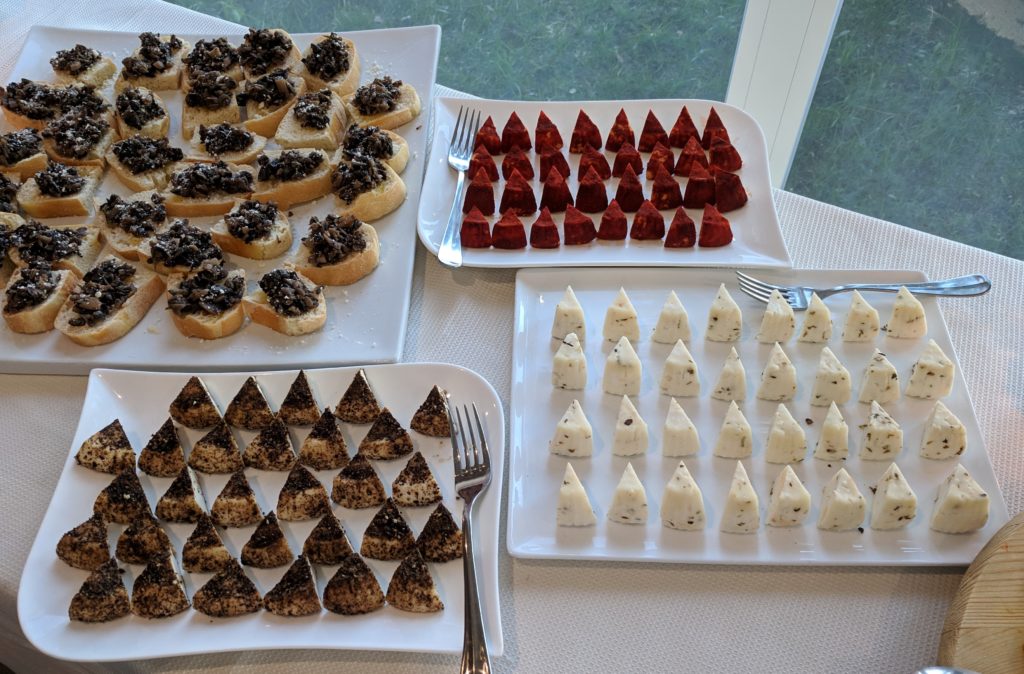
Some of the Tomini were rolled in coarsely ground black pepper before aging. Others were rolled in a mixture of sweet and hot peperoncino powder. For others, the curds were mixed with minced fresh garlic and dried Calabrian oregano before being put into molds. Tomini can also be aged in flavored oil such as garlic, rosemary or peperoncino oil.
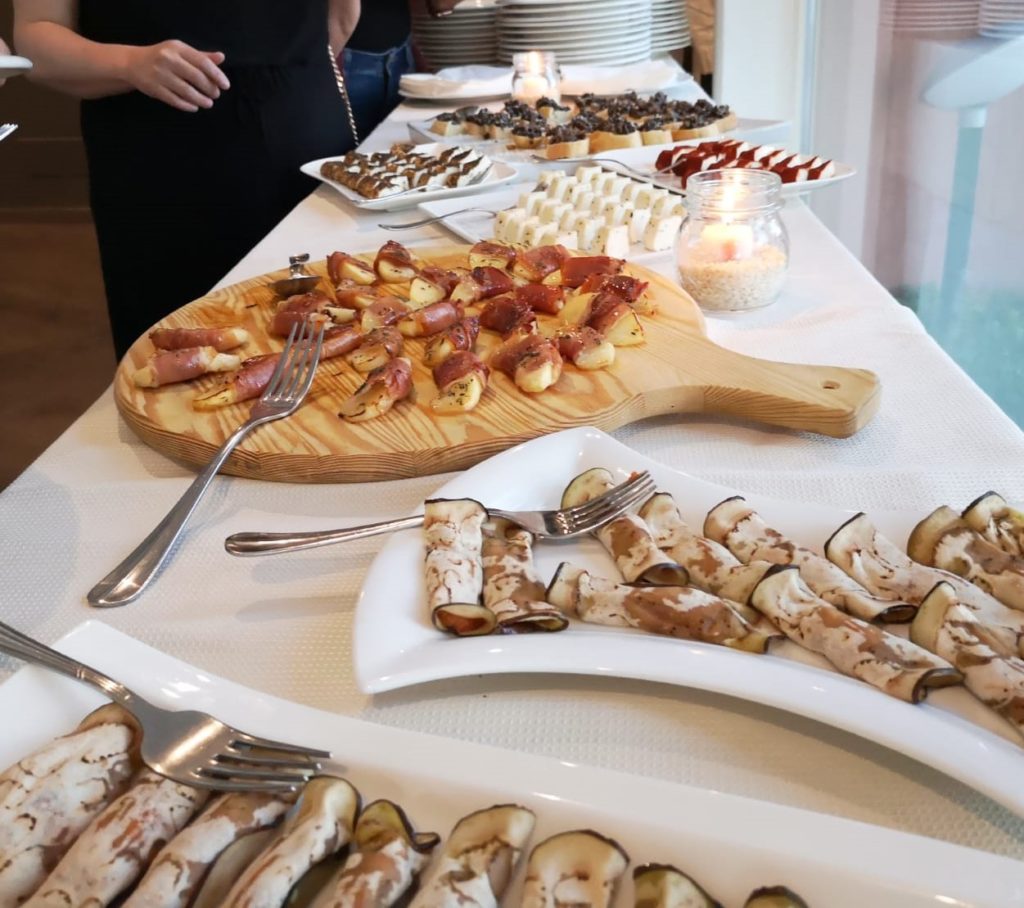
As I was coating the cheese with black pepper and peperoncino, Adriana, the dishwasher who is filling in for Maria who recently had surgery, indicated that she rubbed her cheese with olive oil before coating them with spices. I might give that a try. I have no idea what it might do to the cheese but since these aren’t cheeses that age long, there’s no risk that the oil will go rancid as could happen with a long-aged cheese.
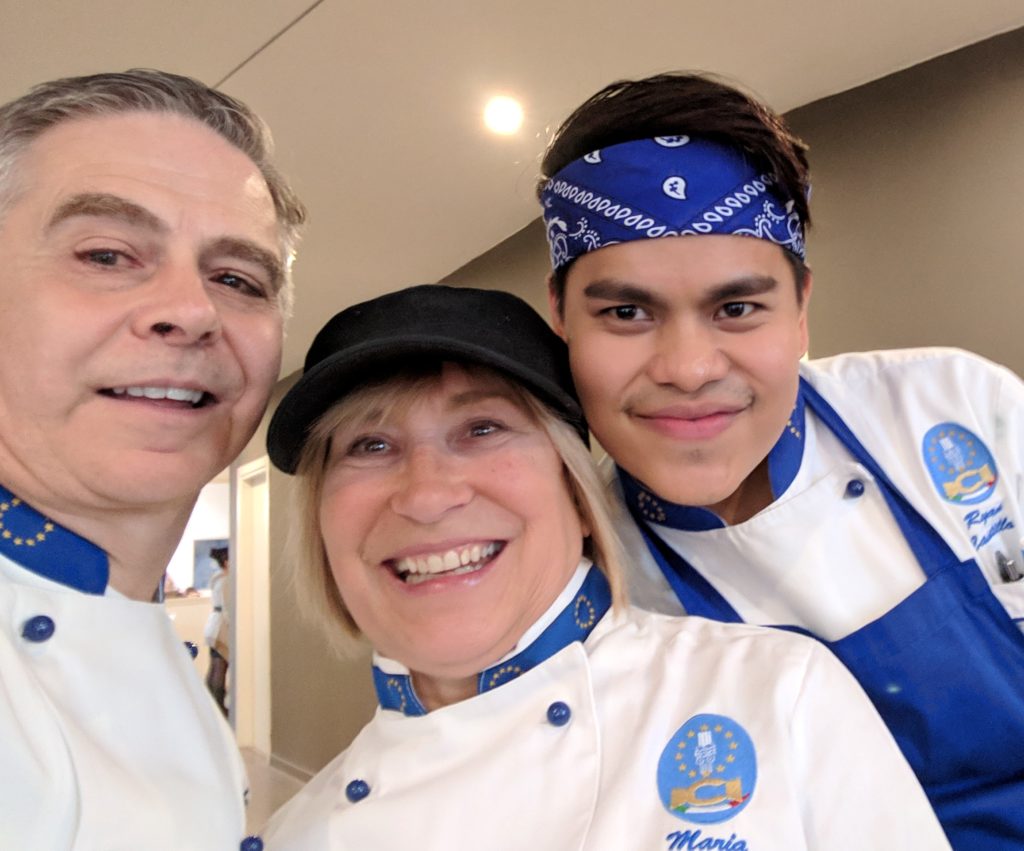
I made cheese for menu execution because Chef John, a week or so before, told me he wanted to see me make cheese (“and not ricotta”… his words) for menu execution. It’s similar to his comment earlier in the course about wanting to see me make pasta ai frutti di mare or pasta allo scoglio (or a similar a la minute pasta made with seafood). I think these are items that he’s using to gauge skill level or techniques that he thinks I need to know if I’m going to teach cooking (which I plan on doing on my return).
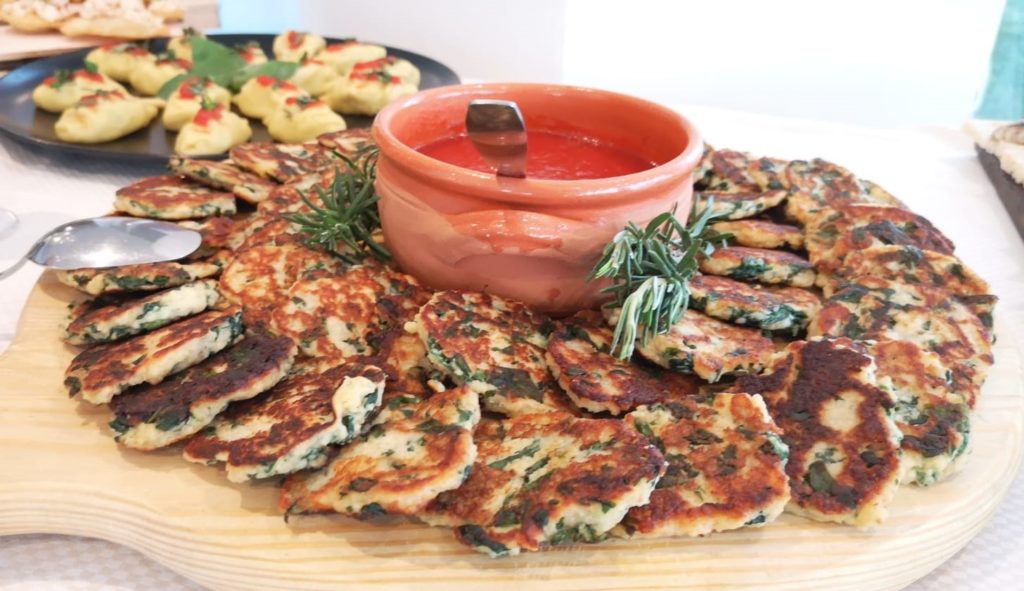
In any case, without his urging, I probably would not have made cheese. Now I’m hooked! The variety of cheeses that can be made without extensive aging times is incredible. I can use the wine cellar. If I start getting into aging for more than a month or so I suspect I’ll have to buy a refrigerated wine cave which will sit next to my gelato batch freezer… wherever that ends up!
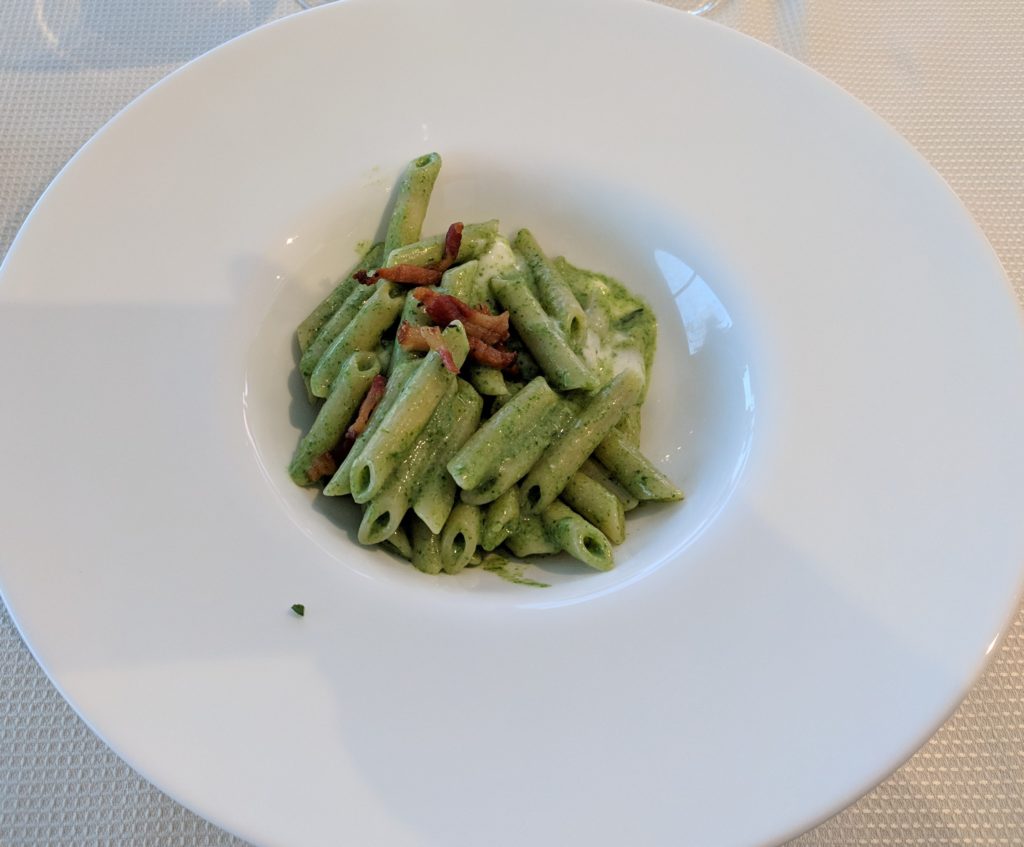
I got a big compliment from Chef Juan’s mom, who’s visiting from Venezuela, regarding my cheese. I also got lots of compliments about my Lasagna Bolognese (which is going to appear on the table at Easter this year!).
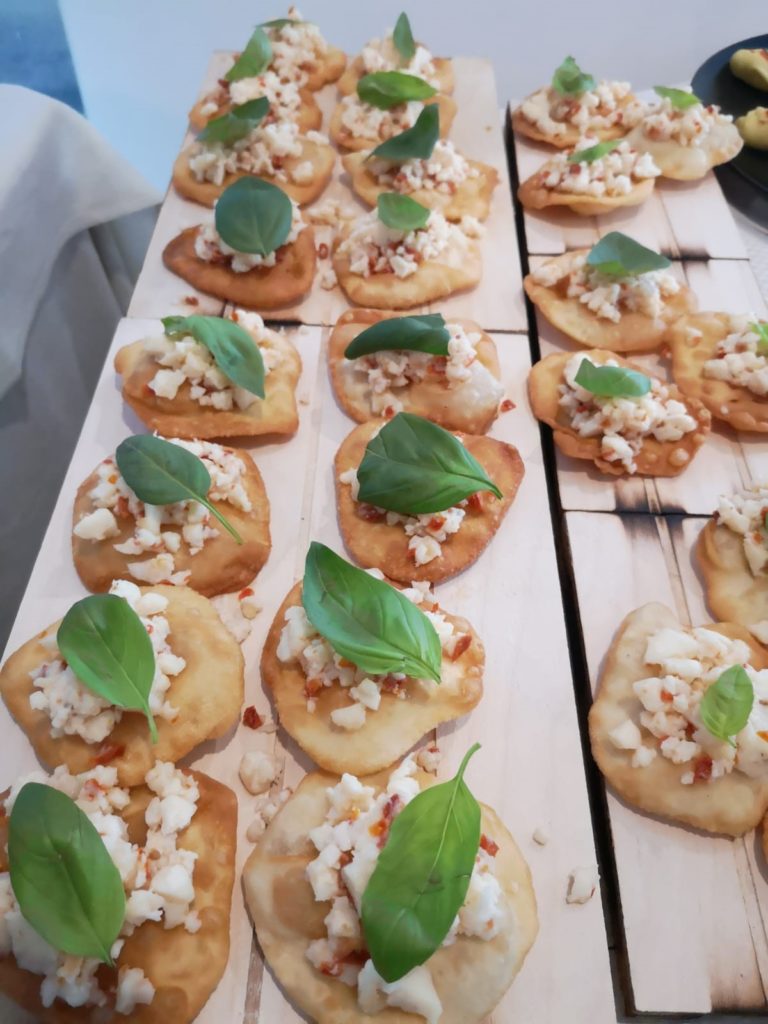
Step one was making the Ragu Bolognese which Chef John pares down to the absolute essentials compared to many published recipes (though I added a bit of garlic which he doesn’t do). It’s packed with flavor from very few ingredients. Step two was making fresh pasta and cutting it into circles that just fit inside the individual ramekins. The pasta air-dried for a day. Step three was making the besciamella and refrigerating it overnight so that I could squeeze it out of a pastry bag. All of those steps happened on April 7th and 8th.
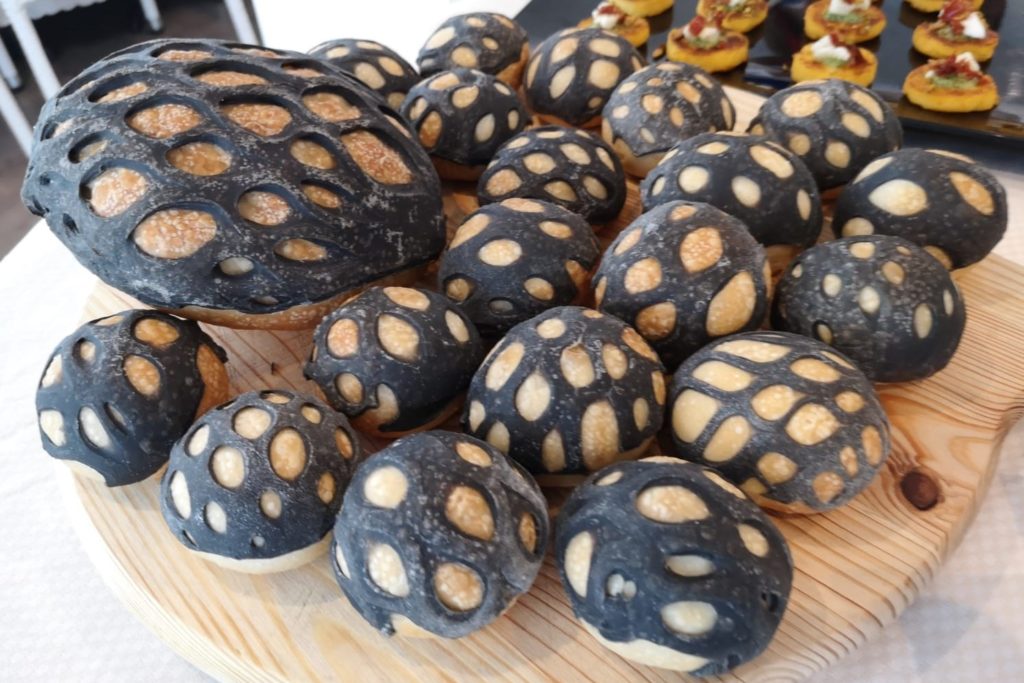
The morning of April 9th, menu execution day, was pretty mellow for me. My cheeses were aging without need of attention until it was time to cut them and plate them for the buffet. I layered 29 ramekins (the total that we had) with lasagna hoping that one of our 30 guests didn’t want lasagna!
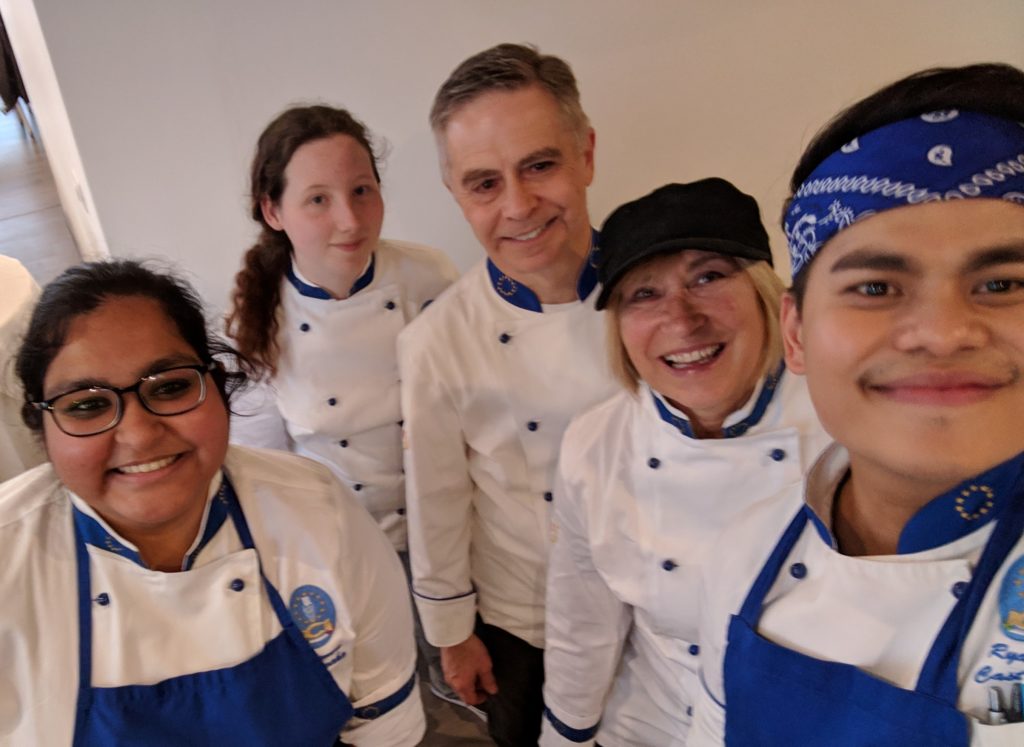
It was a Zen-like meditative experience: A thin layer of ragu, a sheet of pasta, another thin layer of ragu, then besciamella piped in to cover, then Parmigiano Reggiano cheese then pasta, followed by more ragu, besciamella, and Parmigiano followed by pasta, then ragu, Parmigiano and a drizzle of melted butter. This brought each ramekin to just below the top.
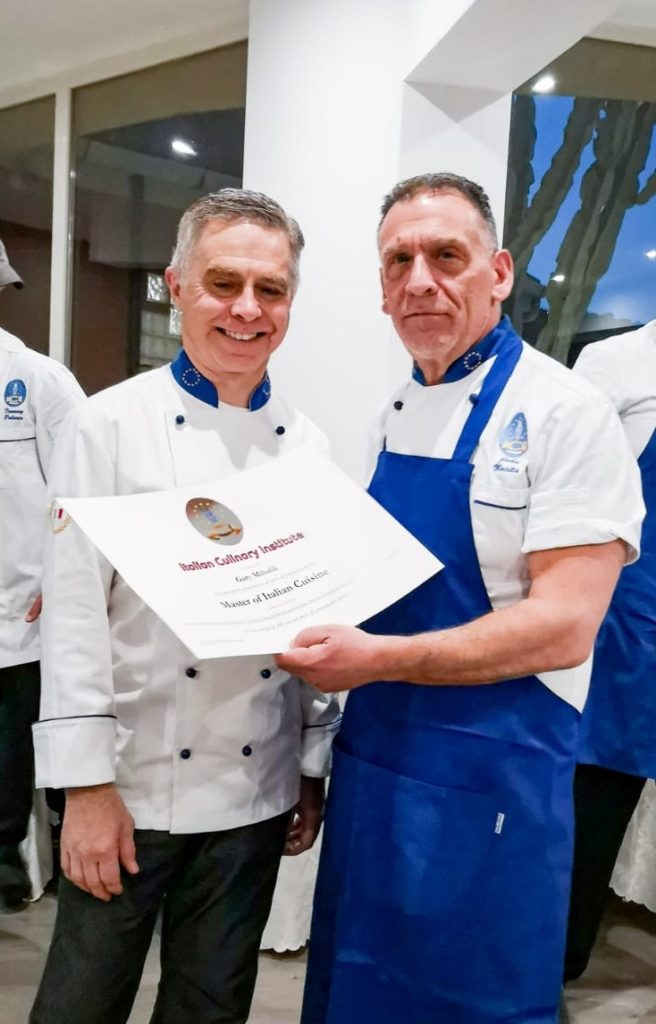
I put them on a sheet tray, inverted another sheet try on top, and put them in the walk-in. My work was done. I spent the rest of my time in the kitchen helping others who had more last-minute work to do.
The lasagne were served as the first primo of the evening and therefore the first plated dish after the serve-yourself antipasto buffet. I baked them and drizzled them with a tiny bit of house-made rosemary oil just before serving them.
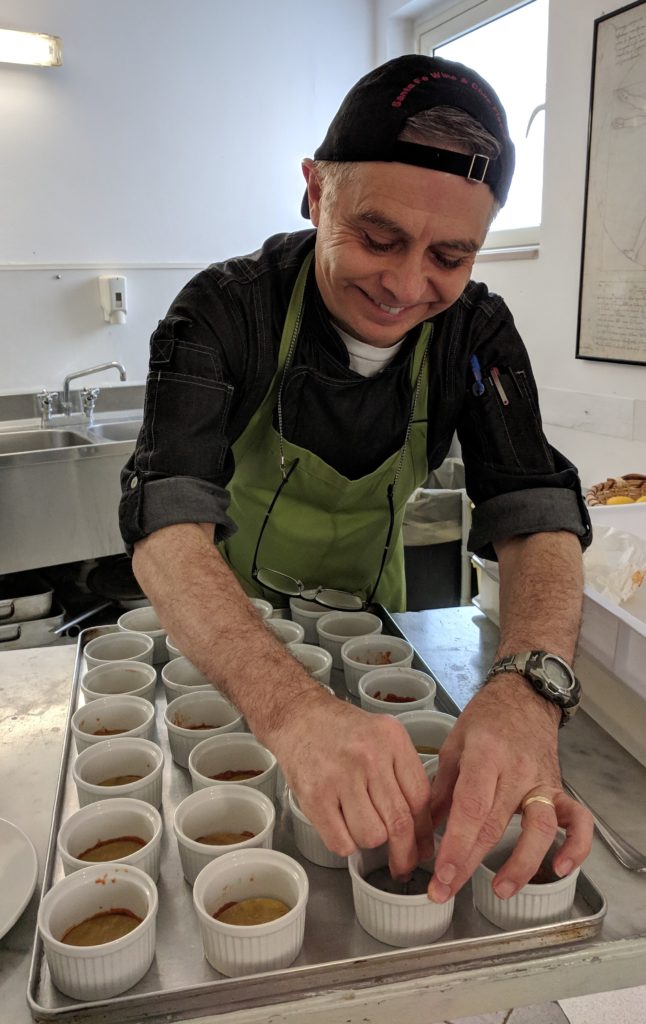
Before we got to the primi, however, Chef John made a little speech and then gave us our certificates. A few hours earlier we had gotten our official Italian Culinary Institute Chef’s Jackets which we were all wearing. It was an emotional moment: the culmination of three months of hard work and weight gain in the service of researching the flavors of Italy. (It sounds facetious but it’s really true.)
I’m starting to draft this post on Thursday. All the students left today, except me. When planning my flights, I decided that I didn’t want to be rushed with packing during the last days of the course so I planned my departure for Saturday.
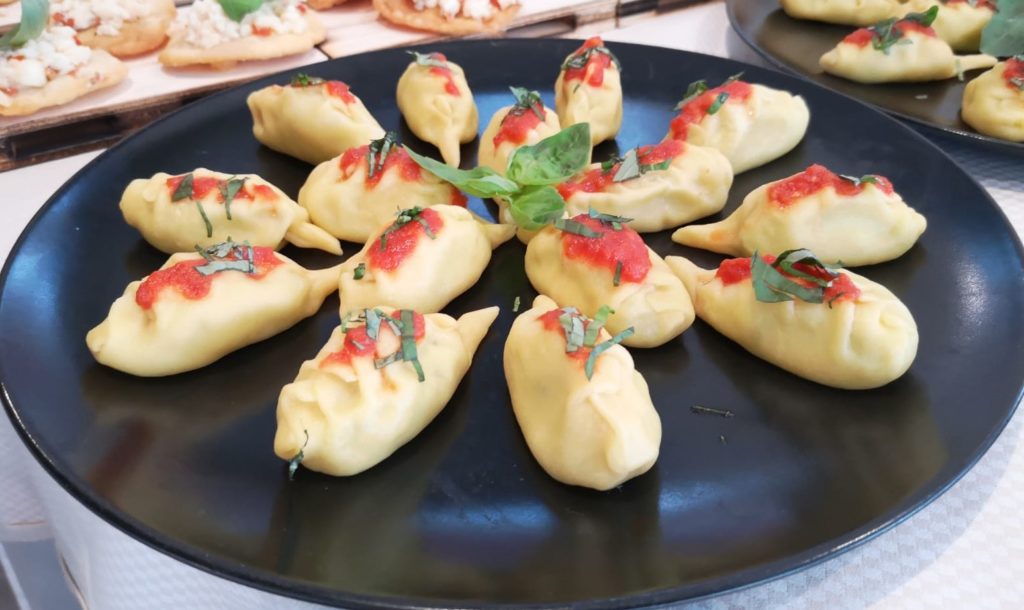
Today, Chef Juan and I spent a couple of leisurely hours inspecting all the salumi we made back in January and “maintaining” the large cuts, like prosciuttino and capocollo. Maintaining means checking weight loss. Each type of cured meat product has an ideal percentage of weight loss as part of the curing process. Maintaining also means cleaning off any mold with white wine vinegar.
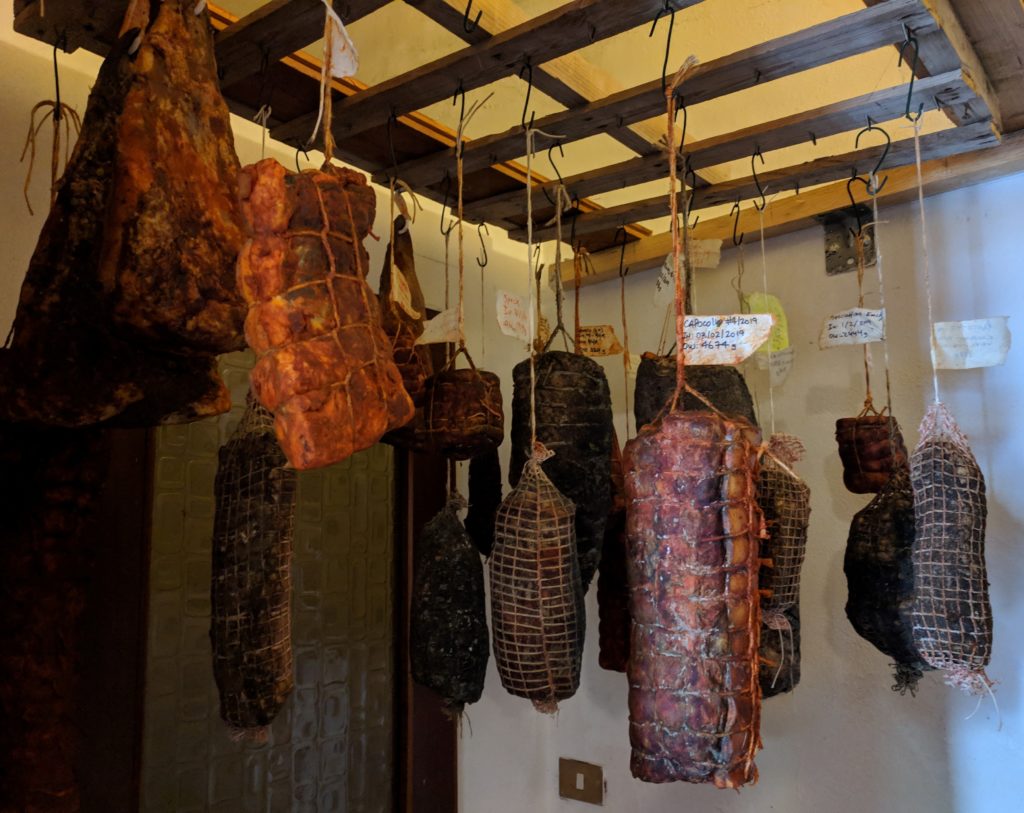
Mold is a natural part of Italian salumi. Mold doesn’t really penetrate the surface of the meat. As it appears, one just cleans it off. Ideally the meat is checked every few days. Sometimes one reapplies another coating of whatever seasoning was on the exterior. The seasoning doesn’t really penetrate the meat any longer as the surface is dry but it acts as another protective layer on the meat. Some of the cured meats that we made in January won’t be ready till October.
On Friday, the staff was reorganizing the kitchen after our three-month marathon and taking inventory. I “maintained” all the salami and then vacuum-packed everything that didn’t need more aging. My afternoon was spent packing for my departure.
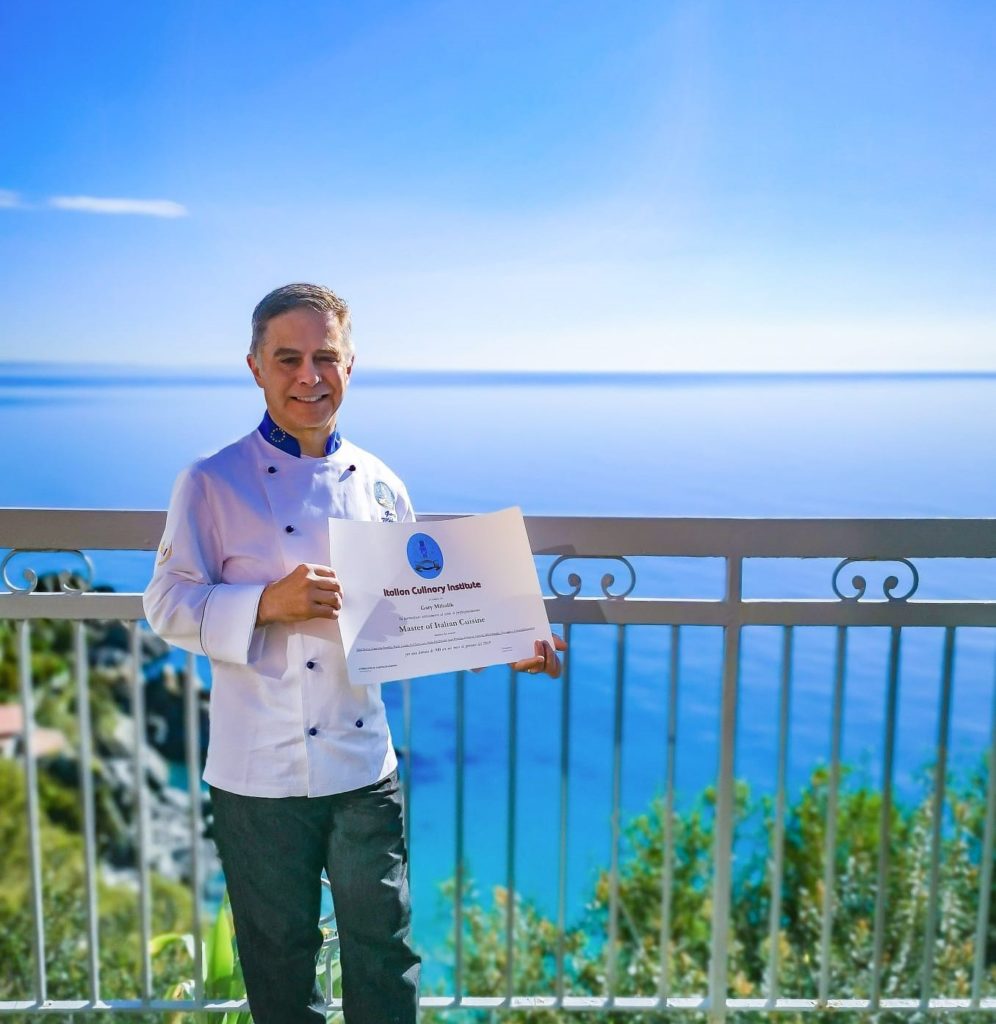
Once I get home on April 14th I’ll be in full-cooking mode getting ready for Easter dinner. I’ve taken my lessons to heart and plan on making the following assuming I can get all the ingredients:
Antipasto (served on individual plates while having cocktails)
Ricotta Fresca Fatto in Casa, Condita con Olio d’Olivo
Melanzane sott’olio
Tonno del Chianti
Fraguni
Salame con Pane di Formaggio alla Romana
Arancini con ‘Nduja
Fave con Pecorino
Primi (served in sequence on individual plates)
Risotto con Piselli, Crema di Piselli, Olio di Menta
Minestra di Fagioli Borlotti di Zia Fidalma
Lasagna Bolognese
Secondo
Abbacchio alla Romana
Carciofi e Patate
Focaccia
Dolci
Torta di Agnello di Sanguinamento (Rich DePippo’s Bleeding Lamb Cake)
Babà con Sciroppo di Rum
Gelato di Crema di Arancia, Scorza d’Arancia Candita, Cioccolato Bianco Caramellato Sbriciolato
My plan for the summer is to go through my notes from the course and cook, cook, cook. I feel like I need to do that to integrate the information and truly make it mine.
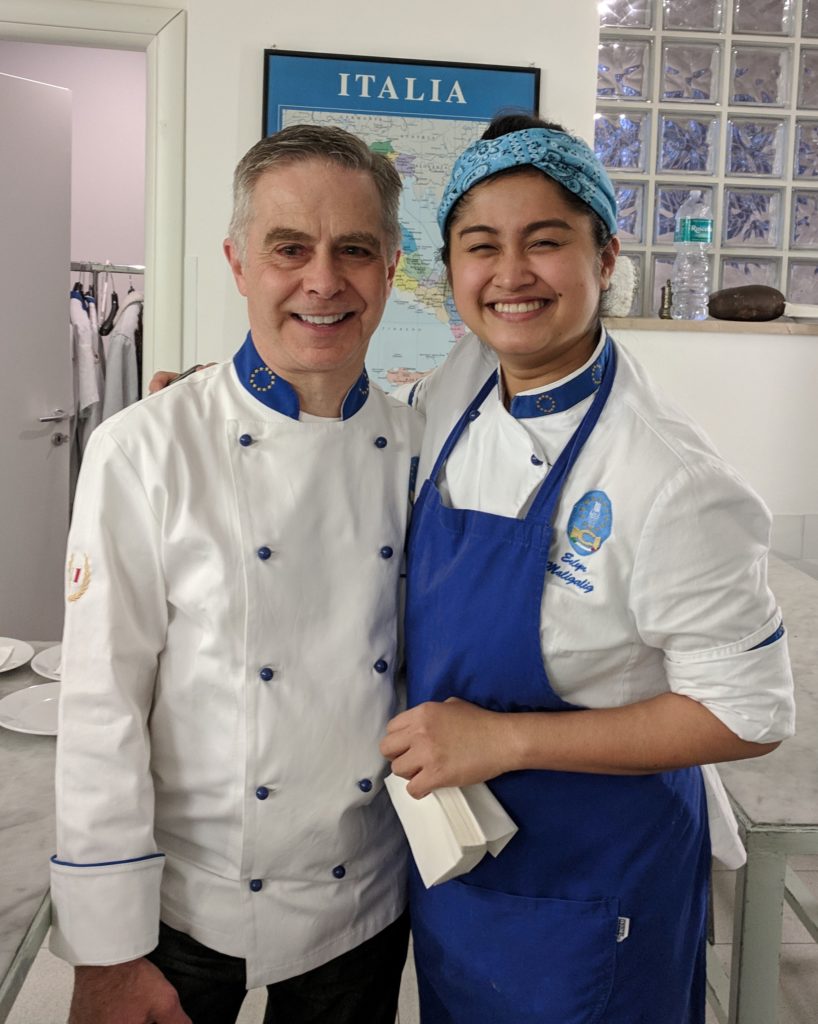
I plan on making my way back to Italy at the beginning of August for about two months for guided independent study in regional Italian cuisine both at the Italian Culinary Institute and at venues in north and south Italy. Until then, I’ll try to get back to a regular schedule of posting blogs with recipes and stories.

Bene, allora, arrivederci a tutti!
Last minute update: I’m spending the night before my trans-Atlantic flight at Il Picolo Bed and Breakfast that is, quite literally, a five minute drive from Leonardo da Vinci airport in Fiumicino. The owners suggested I have dinner at BioAgriola Traiano, about a five-minute walk from the B&B.
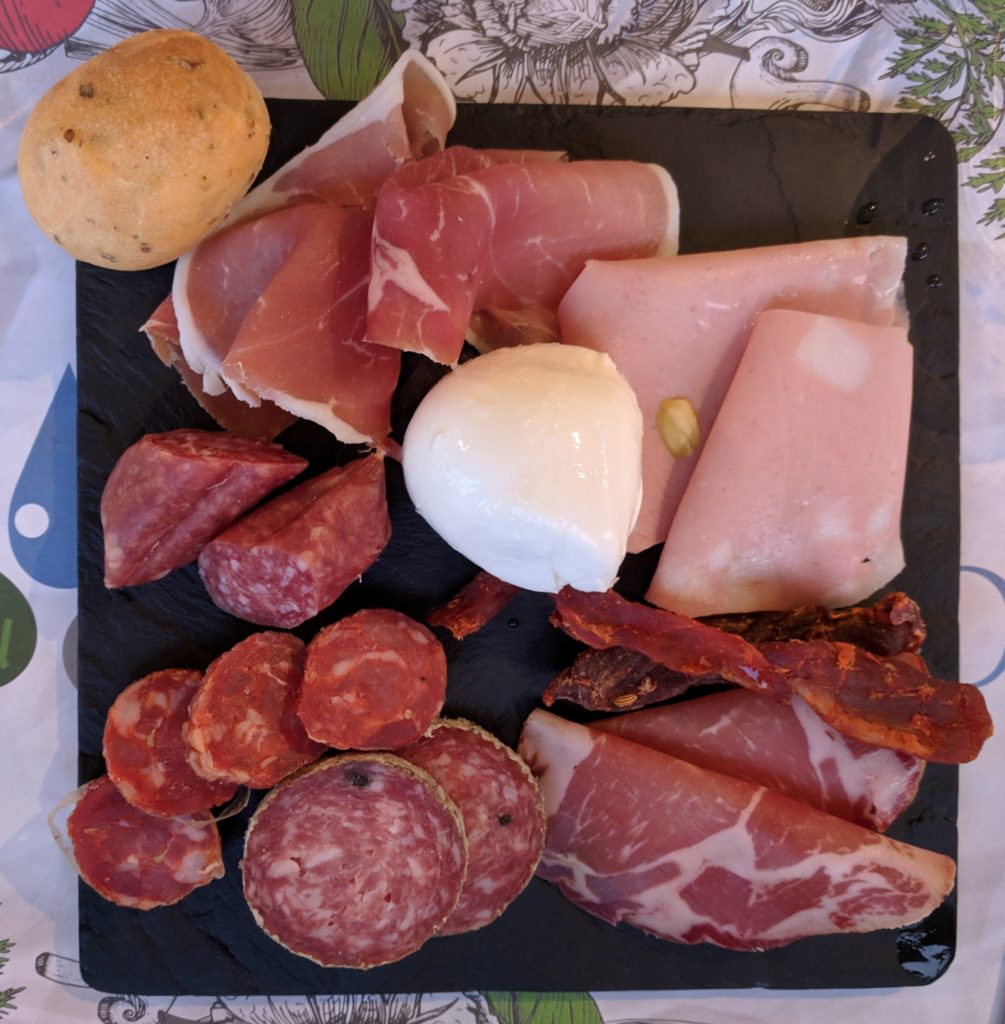
The food was wonderful. The owner speaks five languages and, when she heard I was a chef, she brought out the kitchen staff (both in their 20s) to meet me. The food was superb! I have to make visits to the B&B and the Agriturismo a regular part of my trips back to Italy. It won’t be difficult given how close they are to the airport.
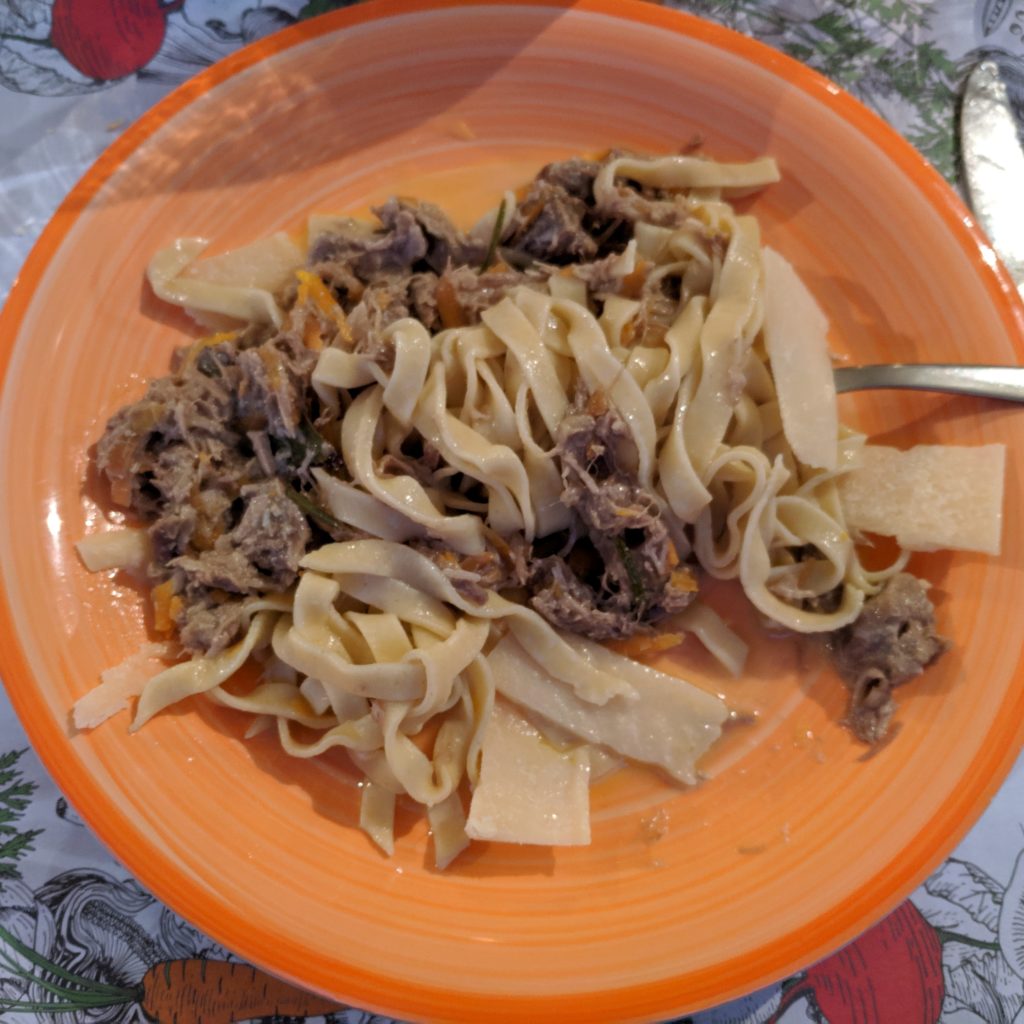

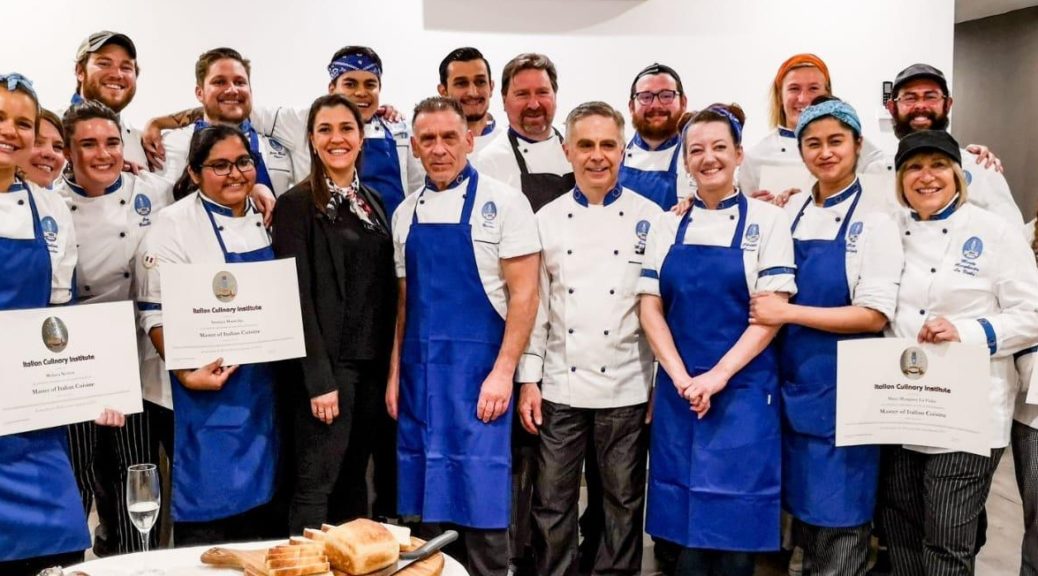
Rich Depippo’s Bleeding Lamb Cake??!! Who began the legacy?
As I recall, there was only ever a promise of a bleeding lamb cake. An actual cake never appeared.
Congratulations Gary! What an accomplishment! Welcome home and hope to see you in Palm Springs soon 😊😊. John
Hi John, I’ll be there in early May. Hope to see you then.
I would do almost anything for an invitation some time in the future!!!!
I am in awe of your commitment!!!
Congratulations.
We’ll make it happen. We have really done little entertaining (compared to our historic average) for the five-plus years that Frank was working in Alamogordo. I am looking forward to cooking and entertaining more now that Frank is not working in Alamogordo.
WOW Gary!!! I’m exhausted just thinking about how much time and effort and work went into these three months of studies…Who knew about the white wine vinegar to keep the mold off the salami?? Going to try your BnB in Mid August before I fly from Rome to Stockholm….Hope you had an easy flight home…
Hi Jackie, the flights were fine though the flight from Rome to Dallas was delayed so I spent the night in Dallas and got home Monday morning rather than Sunday night. I hope you like the B&B. The hosts are really nice and it is so, so convenient to the airport.